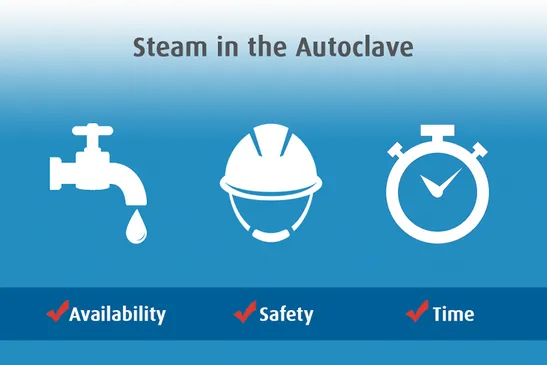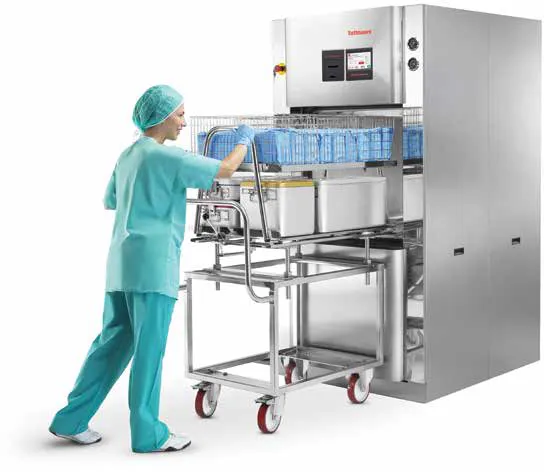Haga click aquí para leer este texto en Español (Spanish)

Availability
Steam is widely available since there are only two ingredients needed: water and a source of heat. Since every clinic, even an ambulatory emergency clinic, must have access to water, it follows that finding water for operating the autoclave is reasonably likely and reliable. In addition to being available, steam is also cost-effective. Since the steam sterilizer, or autoclave, does not require the use of any other chemicals, it’s relatively inexpensive to operate.
Safety
Unlike many other sterilizing agents, steam is non-toxic. Since steam is a form of water vapor produced by boiling, and essentially has the same properties of water, it is not dangerous to inhale or be close to, though one should obviously take precautions to not get hurt by hot steam!
Many other sterilizing agents are poisonous chemicals, such as ethylene oxide, which have been proven to be carcinogenic and must be treated with extreme care. In addition, because chemicals like ethylene oxide are so dangerous, the aeration time post-sterilization can take up to 36 hours until the load is safe to handle, and even then, there is still a chance of residual ppms (parts-per-million) of this chemical.
Cycle Time
One of the most effective ways to transfer heat energy is via humidity, contained within the steam. Think of a wound caused by boiling water or water vapor versus a wound caused by being exposed to dry heat. The wound that resulted from moist heat will hurt more and go much deeper than the one caused by dry heat. Similarly, steam’s moist heat is able to strike microorganisms faster than dry heat, and that’s because steam can transfer heat faster than hot air.
How? Steam sterilization requires a shorter cycle time than other methods, like dry heat, so that when we raise the temperature inside the chamber we achieve sterilization faster. Sterilization by steam can be done for three minutes at 134℃ for a standard load or 15 minutes at 121℃ for a delicate load. The effect will be the same. In contrast, if we use dry heat it will take about 180 minutes at 250℃ to achieve similar sterilization results.

Recap: The Steamy Sterilant
We applied our new understanding of steam to explore why it’s the most effective agent for the sterilization of medical instruments.
- First, we explained that steam is easily accessible, both in its availability and its low cost.
- Second, we discovered that of all the sterilization agents on the market, steam is likely the safest option since it is non-toxic, unlike other sterilants like ethylene oxide.
- And finally we investigated how steam efficiently transfers heat energy via humidity to the load inside the autoclave, and how by raising the temperature, we are able to achieve sterilization faster than with dry heat.
Now that we understand why steam is the most effective agent for sterilizers, it’s time to learn more about the basic processes of autoclaves. Stay tuned for the next post in this series, which will take you deeper into the how’s and why’s of tabletop autoclave operation.
Comments and questions are welcome, as always, in the comment section below.